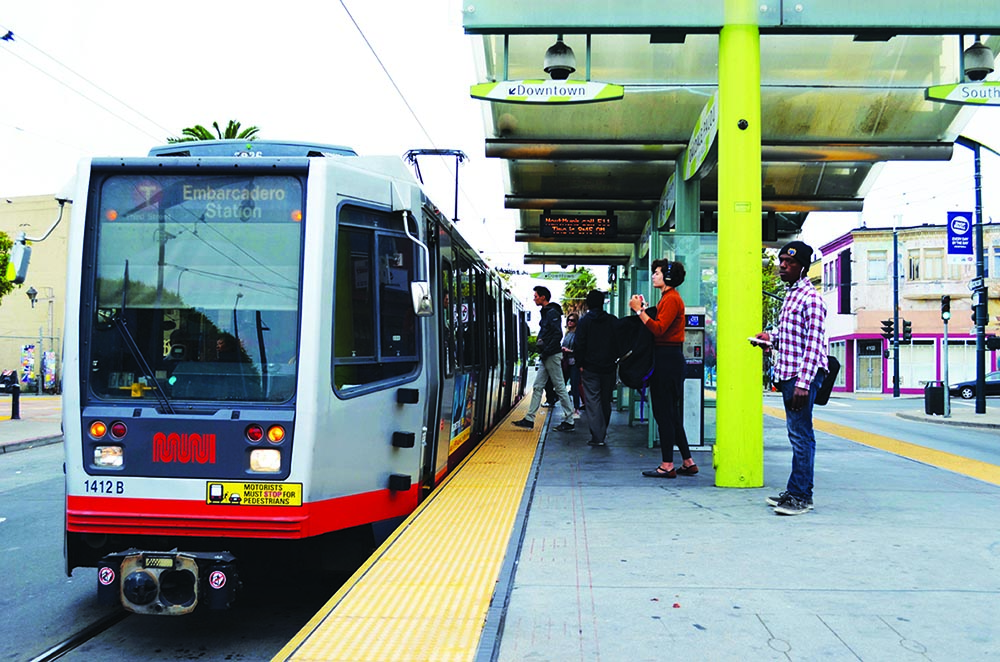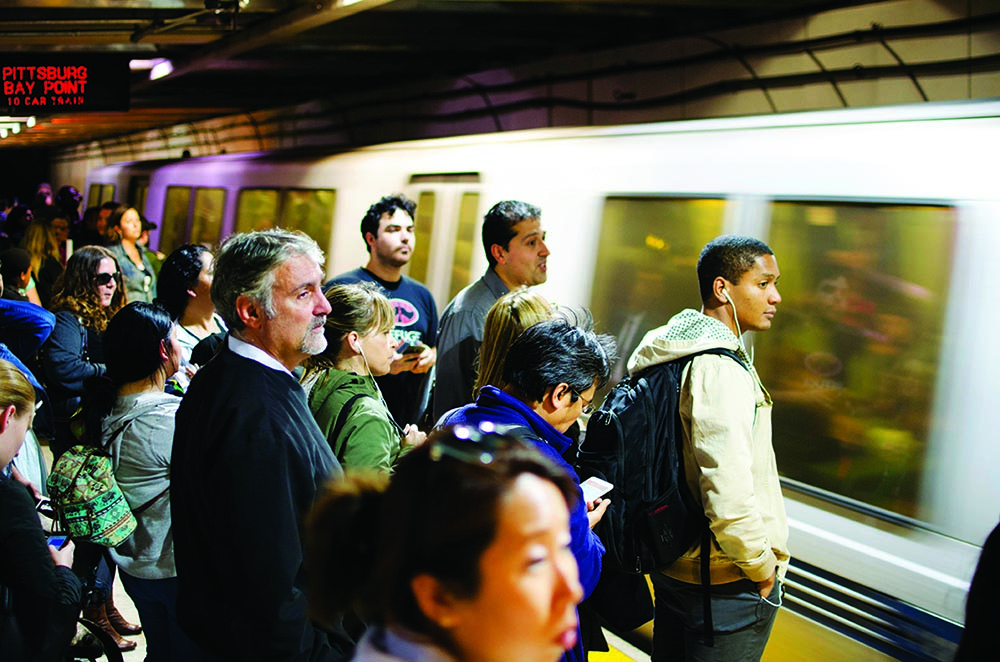Low-income residents relying on unpredictable service lose economic opportunity
San Franciscans spend less on transportation than residents of any other Bay Area city. But there are hidden costs for public transit riders: unreliable trains, long, slow commutes and unsafe pedestrian routes.
Muni service is slow citywide, but it can be particularly burdensome for lower-income riders who must repeatedly switch lines or buses just to travel a few miles to downtown. Lacking transportation options or flexibility for when they must be at their jobs, they often trade comfort, promptness and even safety for affordability.
“If you think of affordability in terms of what you pay out of your pocket, you’re going to get wrong answers sometimes,” said Elizabeth Deakin, a professor of city and regional planning at the University of California, Berkeley. “What you want to think about is the overall time and cost combination that people can afford to pay with the incomes that they make.”
A single ride on Muni now costs $2.25, up from a dollar in 2000. And because more than half of Muni’s 702,000 weekday riders make less than 200 percent of the federal poverty level (or $23,540 for individuals, $31,836 for a family of two), rising fares have a disproportionate effect on low-income San Franciscans. But the single-ride Muni fare remains on par with mass-transit fares in most major U.S. cities, and Muni offers reduced-fare programs to help ease the economic burden of transit for those who need it most.
Elizabeth Deakin, a professor of city and regional planning at the University of California, Berkeley
“No other city has been as comprehensive as San Francisco has been in trying to make mobility more affordable,” said Joel Ramos, regional planning director at transportation advocacy group TransForm and a board member at the San Francisco Municipal Transportation Agency.
The Center for Neighborhood Technology, a nonprofit research group, estimates that a household making the city’s median income of nearly $76,000 spends $8,552 on transportation per year. In contrast, median-income households in other Bay Area counties often spend as much as $13,000 or $14,000 a year — largely because they rely more on automobiles.
But the San Francisco County Transportation Authority found in 2013 that low-income communities are disproportionately likely to experience slow transit and unsafe conditions for pedestrians.
The cost of a slow commute
For residents of lower-income neighborhoods like the Bayview, a slow commute is part of the price of getting around.
High school teacher D’Wana Stewart takes two buses from her Bayview home to her second job at Macy’s. “I take the 54 to the 8X, and that will be about 45 minutes to an hour,” she said.
She could take the T-Third Street light rail, but that takes even longer.
“It’s not as accessible,” she said. “And it doesn’t always come on time.”
Bayview resident Veronica Shepard commutes on the T–Third Street to work in Civic Center at the city Department of Public Health. She considers Muni “pretty cheap,” but her roughly 6-mile commute takes an hour door to door, and she says delays are constant.
“I’m paying for this service, but I’m not getting what the rest of San Francisco is getting,” she said.
The T is one of Muni’s less reliable lines, but spotty service is a problem citywide. A recent city report found Muni’s on-time performance hovering at or below 60 percent, far below the 85 percent on-time performance rate mandated in San Francisco’s charter.
For 16-year-old Lisa Yu, it’s often faster to walk to school than to take the bus. She lives in Chinatown and attends high school 1.1 miles away at Galileo Academy. Because the city gives Muni passes to students in low- and moderate-income households, Yu can ride for free, but it can take as long as 25 minutes. Sometimes overcrowded buses will zoom by her stop without even loading new passengers. “That happens to me a lot,” she said.
Walking is cheap, but often dangerous
A volunteer at the Chinatown Community Development Center, Rosa Chan advocates for pedestrian safety and affordable transit. She said Kearney Street, one of the neighborhood’s busiest streets, often feels like a highway because cars drive so fast along it. City research shows that a disproportionate number of San Francisco’s least safe streets are in communities with economically disadvantaged, minority and transit-reliant populations, such as Chinatown and the Tenderloin.
Peter Cohen, co-director of the Council of Community Housing Organizations, said the city has not done enough to address what he calls “the gentrification of our transit system.”
[On December 9, 2015, the San Francisco Chronicle published an analysis of economic disparities in regional transportation, citing research by the real estate company Zillow. The study found that for Bay Area residents making less that $40,00 a year, commute distances increased to almost 15 miles in 2013, from 9 miles in 2008.]

This article is part of a special reporting project on the cost of living in the Winter 2016 print edition of the Public Press.










